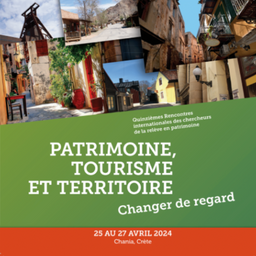The rise and fall of the “Wild West” theme zone in European theme parks
My Session Status
Disneyland Park (1955, USA) became the model for a globalized leisure industry, thanks to its practice of thematization in this planned space; a park that a few months later would be called a “theme park” to differentiate it from previous amusement parks. Disneyland’s success in attracting and retaining visitors-consumers meant that its model could be transferred to other territories. What’s more, Frontierland, one of the park’s lands, was to reveal this circulation of models in particular, as numerous theme parks drew inspiration from it, helping to make the “Wild West” the most frequently used theme during that pivotal period in the theme park boom, from 1955 to 1995. In that respect, theme parks contributed to the production of an imaginary, which became a myth, by staging the colonization of Amerindian lands for recreational purposes, in response to the fascination of the European public in an era of obvious Americanized cultural transfers. The unmistakable “Wild West” was to be found all over Europe, from theme attractions such as “Mine d’Or Engloutie” (1987, Bagatelle Park, France) or “Calamity Mine” (1992, Walibi Park, Belgium), to fully “Wild West” theme parks such as Ok Corral (1966, France), High Chaparral (1966, Sweden), Cowboyland (1995, Italy), Pullman City (1997, Germany), or El Paso City (N/A, Serbia), not forgetting countless thematic zones such as “Canyon du Colorado” (1963, Mer de Sable Park, France), the performative form of “Frontierland” (1992, Euro Disneyland Park, France), if not quite simply “Far West” (1995, Port Aventura Park, Spain).
However, once the heyday of cowboys and “Indians” and the epic gold rush had passed, the theme became less and less popular with visitors, and theme parks were forced to renew their “Wild West” theme zones faced with this risk of obsolescence. This last statement invites us to understand the reasons for this decline. Is it the end of an Americanized power projected in the theme park? Is it the theme park’s ability to produce new themes? Is it an immersive American West that has become trivialized by the—overly—wide circulation of models? Is it a colonial imaginary that no longer corresponds to the values of today’s society? Furthermore, could the erasure of this theme reveal certain cultural particularisms? Whatever the case, these questions invite us to counter the top-down process of “disneylandization” in order to understand how practices “imported from outside” can weaken the theme park. This may raise the delicate question of preserving thematic zones such as those of the “Wild West,” which symbolized the global expansion of the first theme parks.
